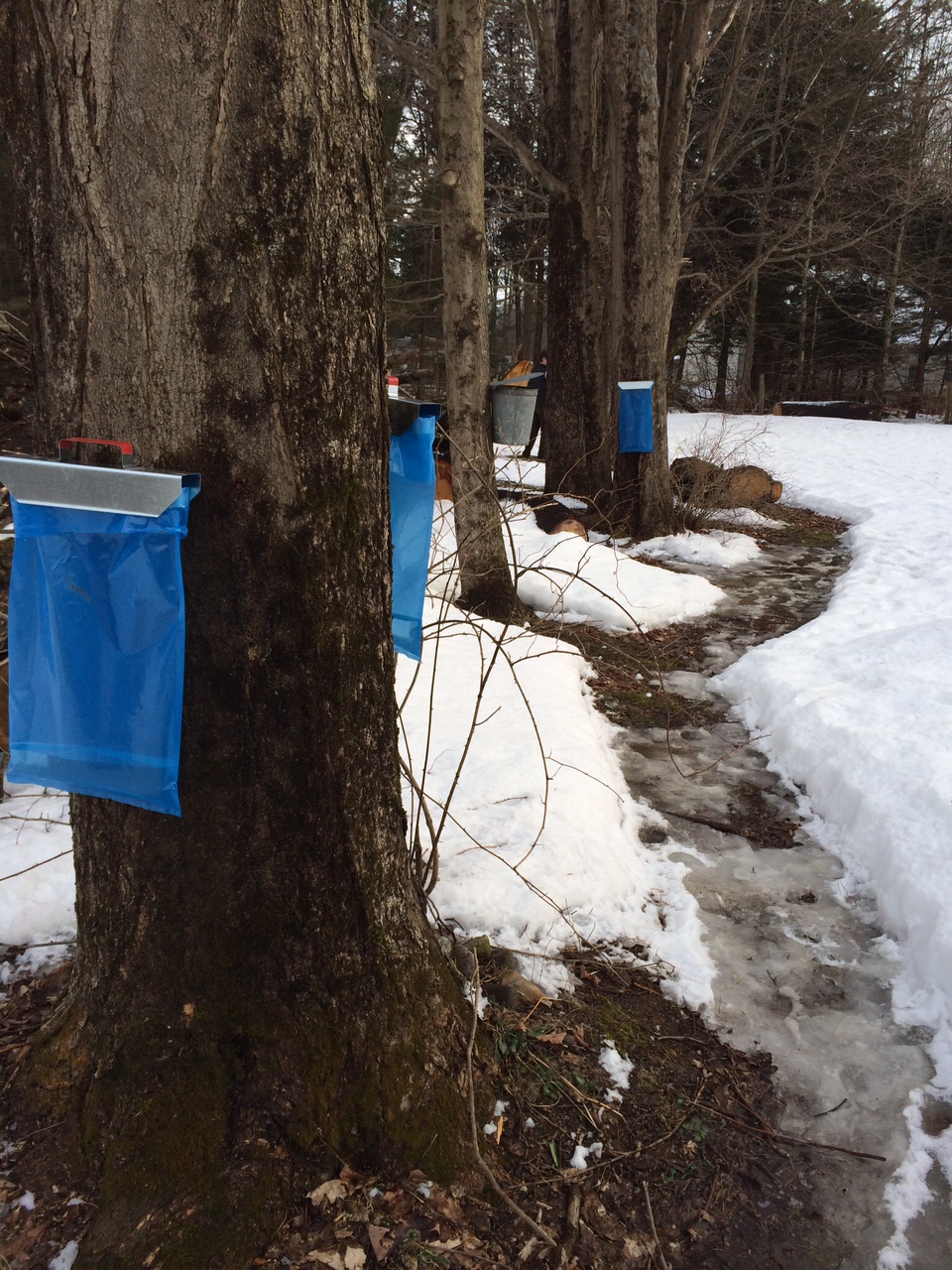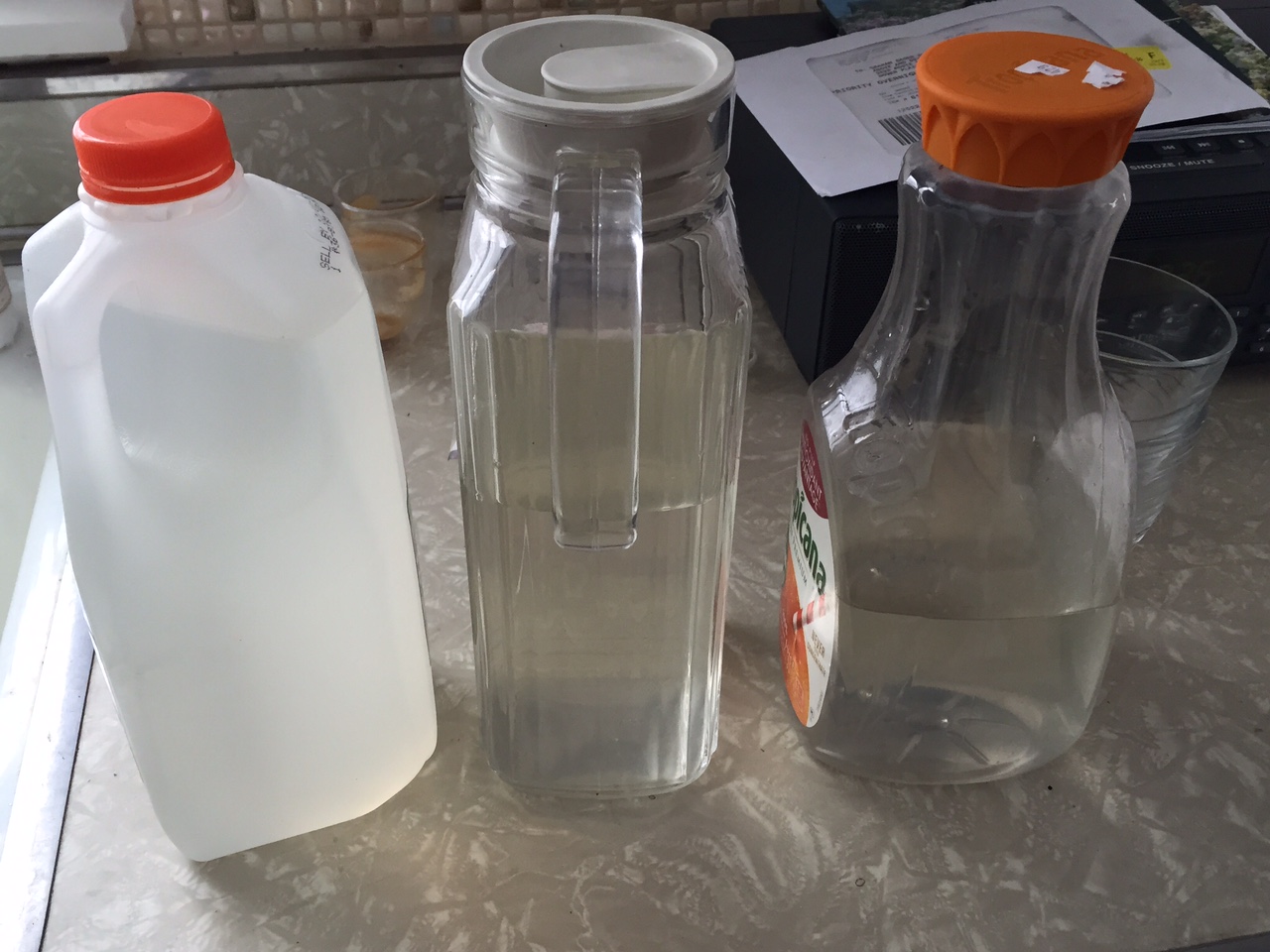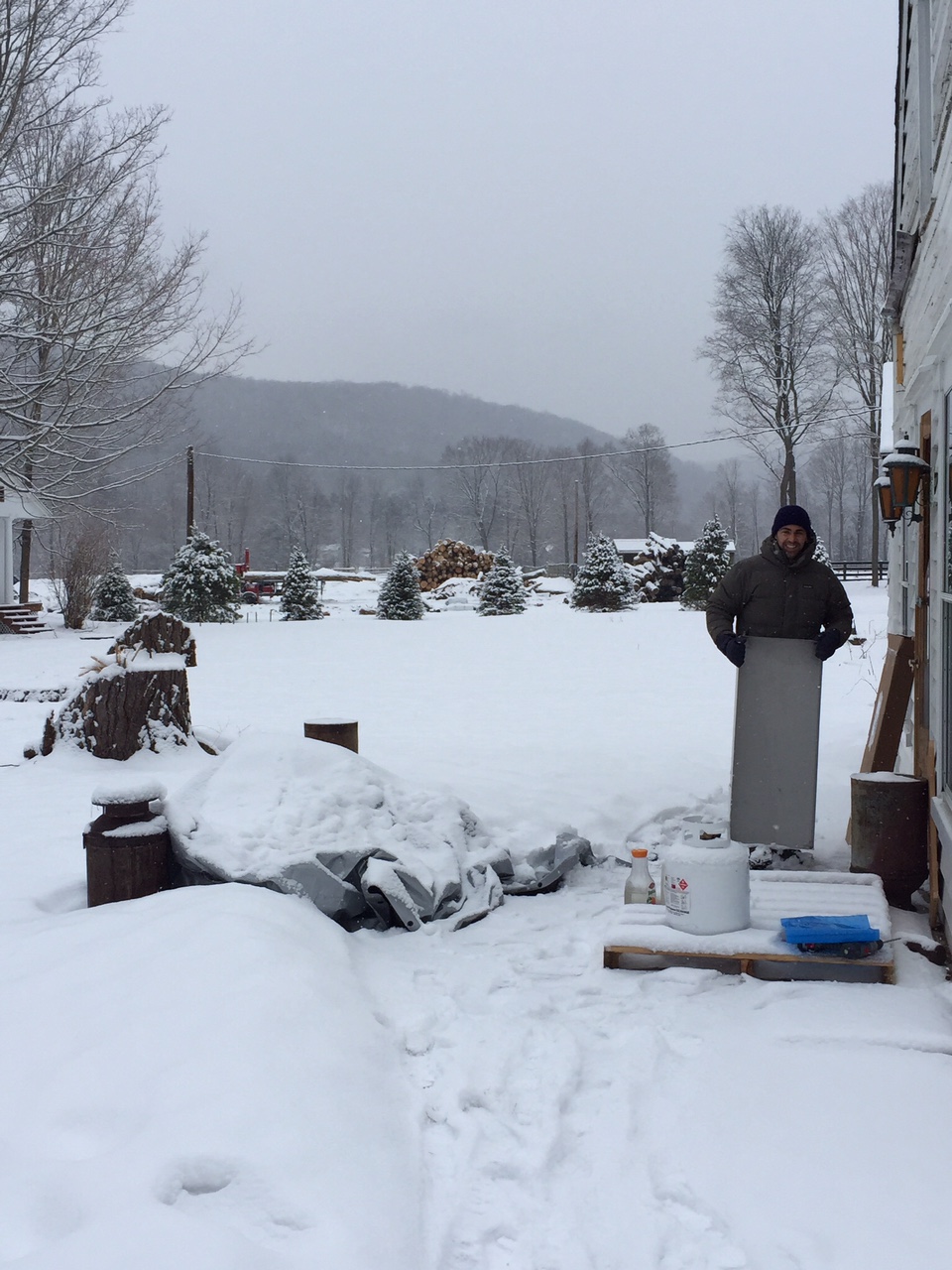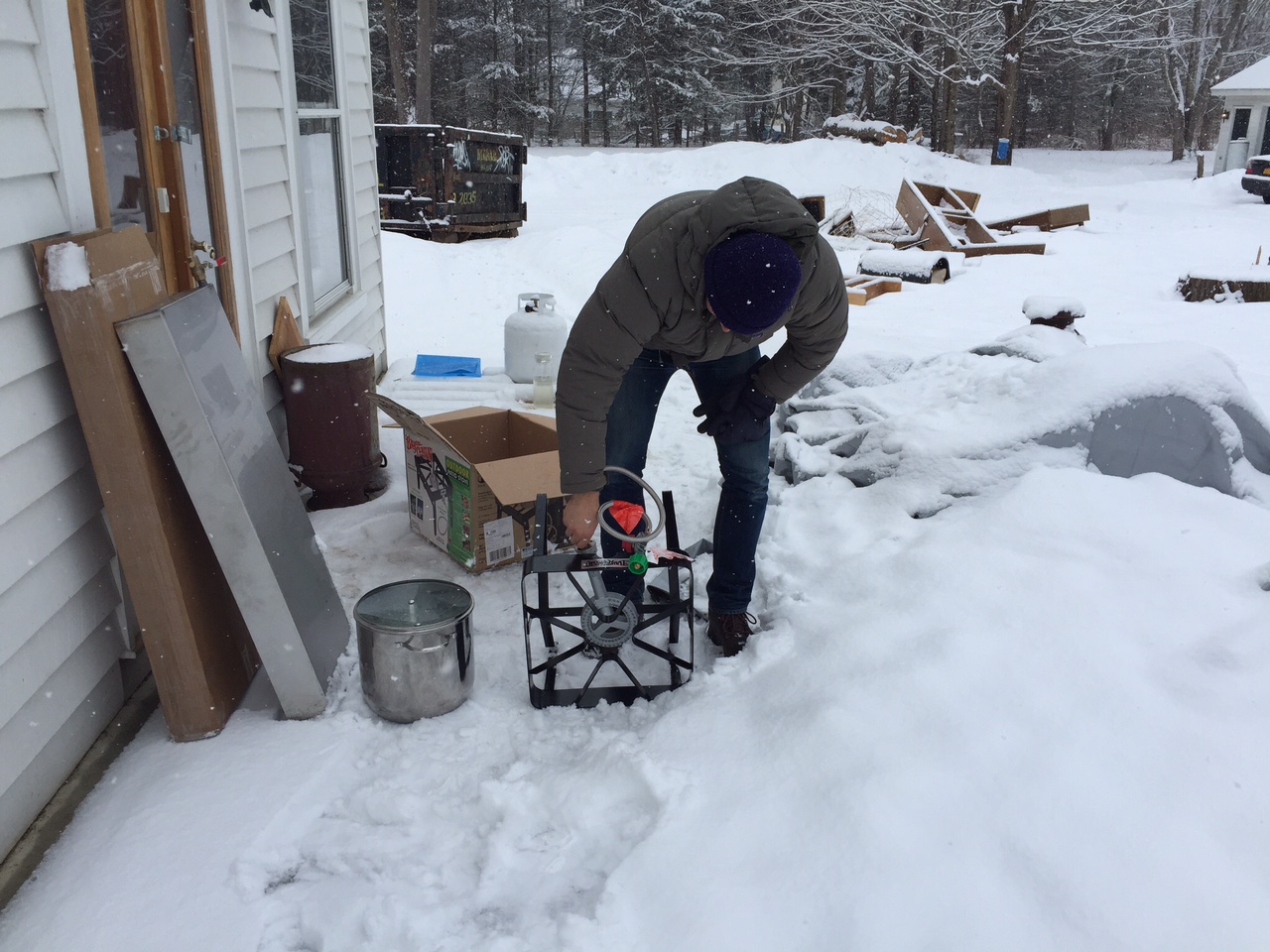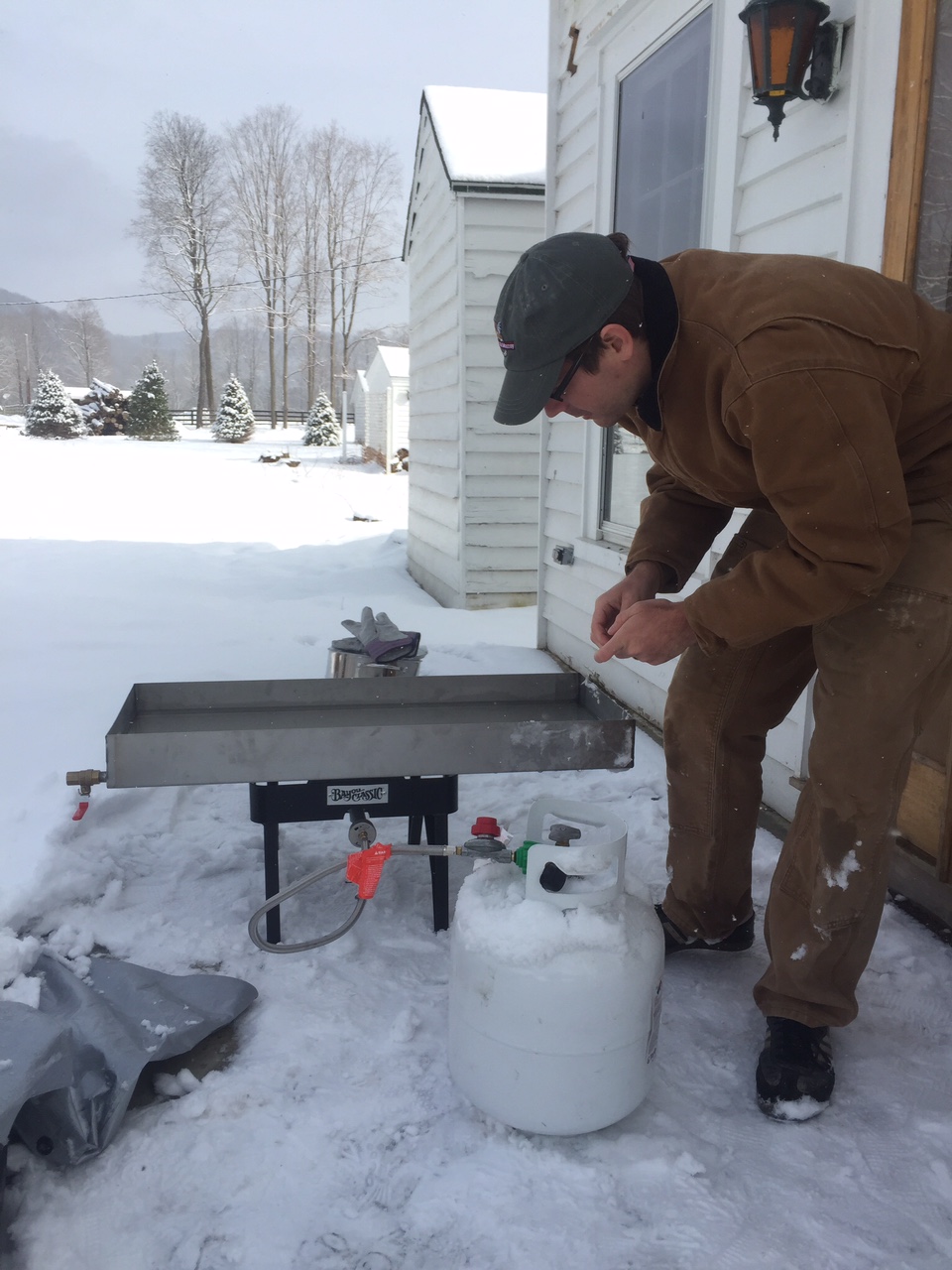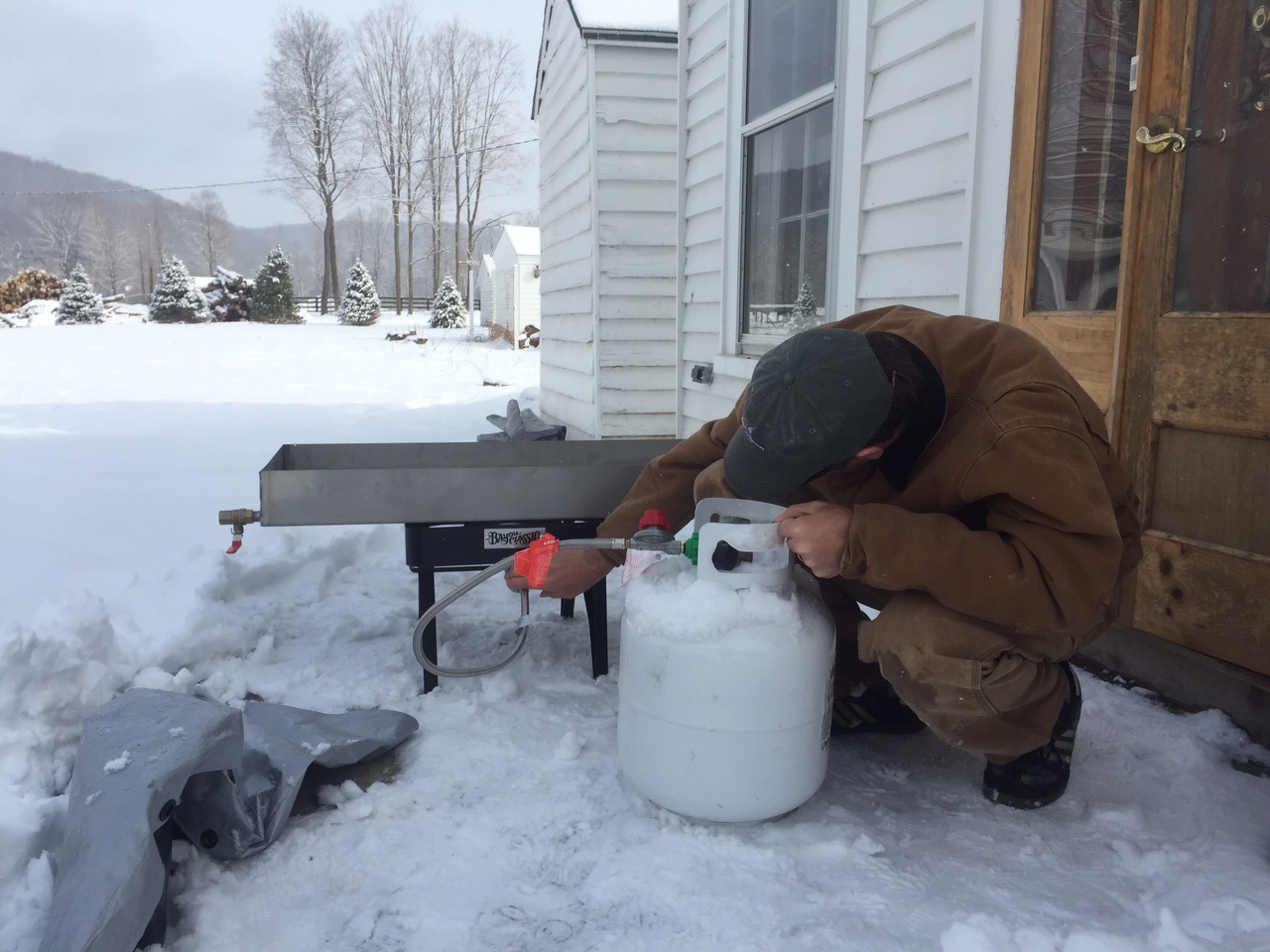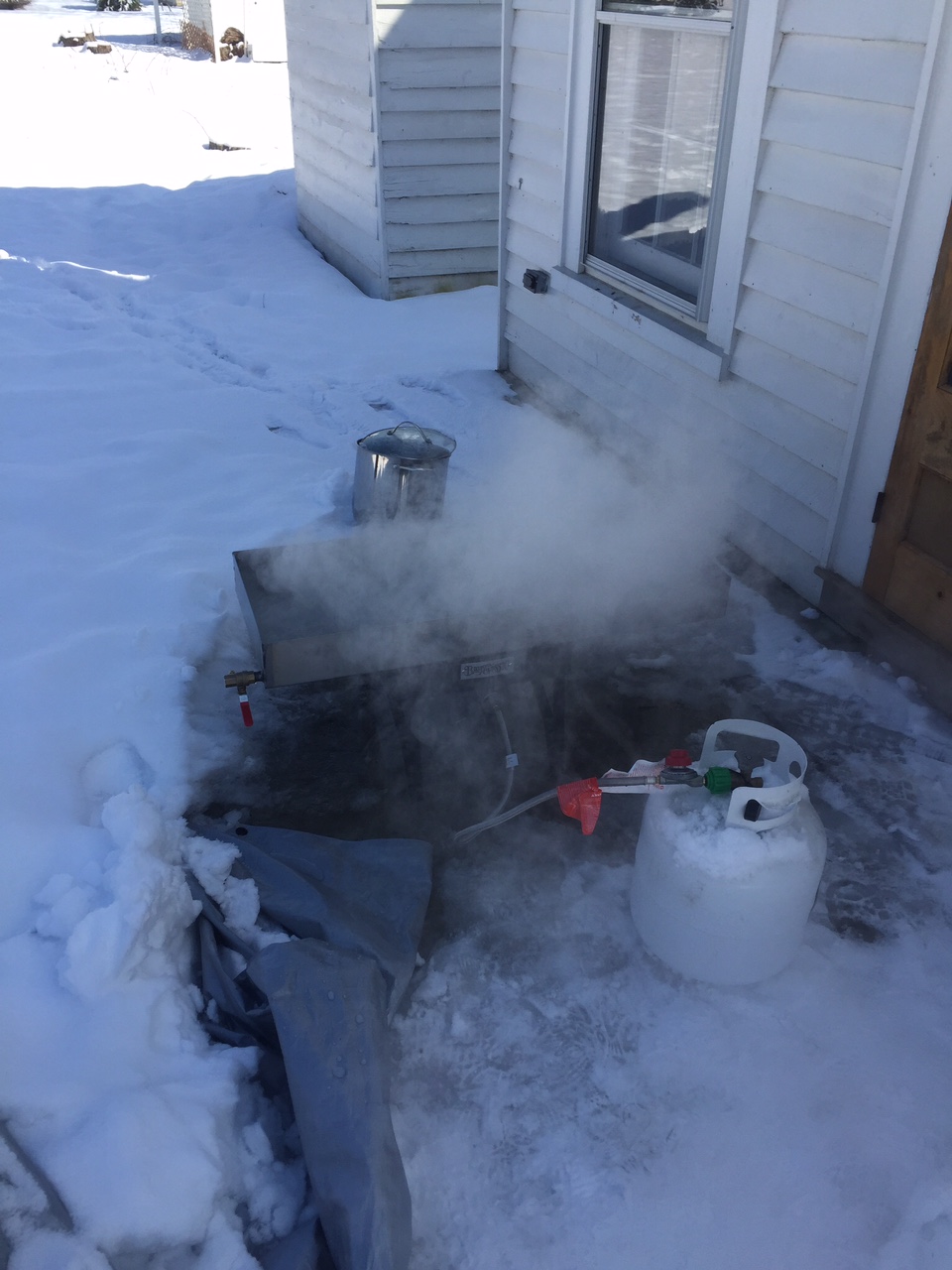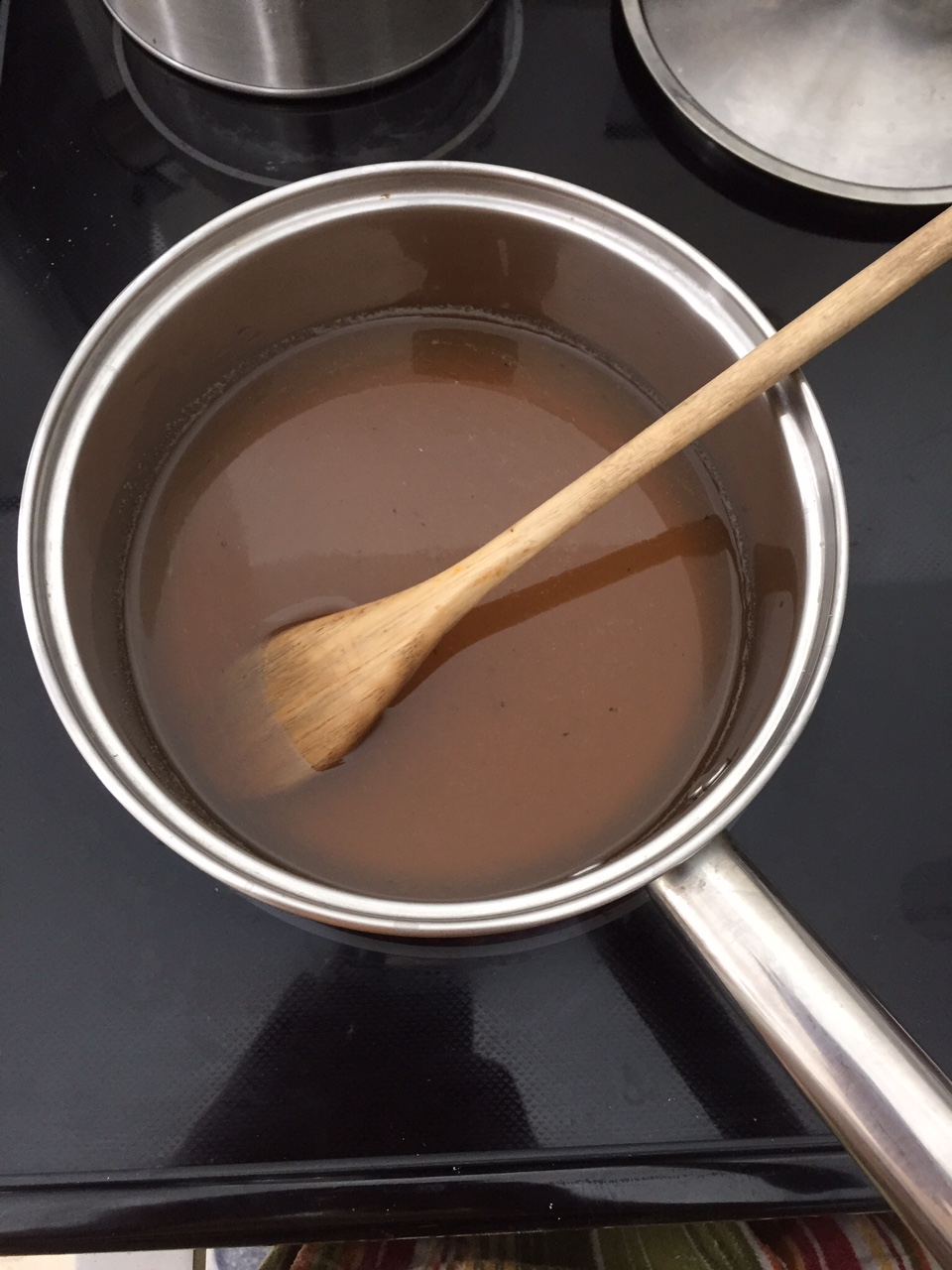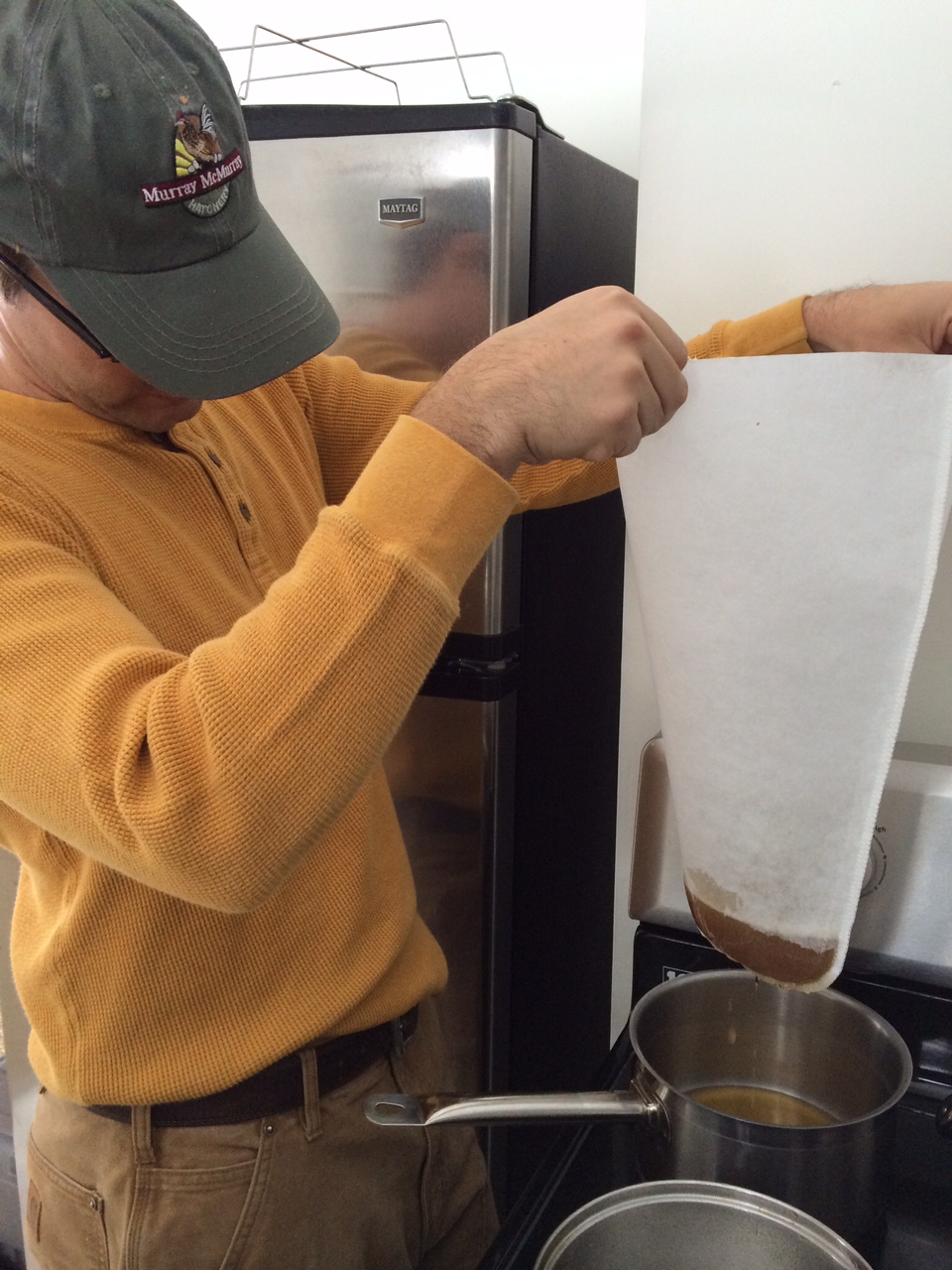Well, it as been a busy month, lots of seed planting, drywalling, planning and tiling.. but we did manage to get away for almost an entire week to get a little pre-summer color. That did not slow down progress though, if anything, it made us work extra hard out of some misguided vacation guilt syndrome.
At first the weather looked like it would be perfect for the maples to run sap, but then each day saw drops in temperature and wind chills and overcast days. Such as it was we managed to get a couple days of decent sap runs to use for our inaugural sap cooking attempt. For those of you new to making maple syrup (can't imagine that is many of you) the goal is to have freezing nights and above freezing days. The warm days pull the sap from the roots up into the branches to nourish the future leaves and growth, while the cold nights cause the sap to rush back down to the roots, the tree taps catch the sap on the way up and down. We had imagined the sap would be dark like the syrup, but in reality it is clear like water and has very little taste. We have to collect 40 gallons of sap for every gallon of syrup, for this first attempt we only had a few gallons.

